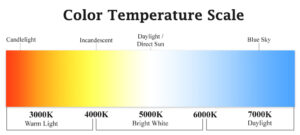Hi, Lisa. I’ve been using compact fluorescent bulbs in my outdoor lights, but they don’t look right. They take a long time to light up when it’s cold, but once they’re lit, they’re too bright. What am I doing wrong? Thanks, Doug
Hi Doug. Your question is a great one, since lots of folks are now using compact fluorescent bulbs in their outdoor lights. Based on your comment about the bulbs looking too bright, it sounds like your fixtures might be lanterns that have a glass face so you can see the bulb.
Compact fluorescent bulbs (CFL’s) can be successfully used in outdoor fixtures, but let’s take a look at what we need to consider in order to use them successfully:
- At night, the dark adapted eye does not need nearly the amount of light to see that is required under daylight conditions. This means that we do not need nearly the wattage in an outdoor fixture that we’d use inside. A 20W CFL bulb is MORE than enough (this equals 60-75 watt incandescent bulbs), and 13W or 10W bulbs (these equal about 40W incandescent bulbs) are even better.
- CFL’s require a minimum temperature to light up and to reach full brightness. The colder it is, the longer it takes a CFL to reach its full brightness. In a cold climate, like Colorado’s, outdoor use of CFL’s is a challenge in the winter.
- The single biggest factor that affects fluorescent bulb life is the number of times the bulb is turned on and off. If you have a fixture on a motion sensor and it cycles on and off repeatedly, the bulb will fail much faster than one that is turned on and stays on for hours at a time.
- CFL’s are brighter to look at than incandescent lamps. This is particularly an issue in fixtures with glass fronts, which means that the light is spilling out in all directions. We want to choose fixtures where the bulb is not visible behind glass, or is at least concealed behind glass that’s translucent and diffuse, not transparent.
So, how do we put all of these considerations to practical use?
- Use a much lower wattage bulb than what you would expect. In outdoor lighting, less is more!
- For fixtures in extreme cold or that cycle on and off frequently but don’t remain on for long, use fixtures with integral LED sources or an energy saving halogen bulb. As LED technology continues to develop, LED replacement bulbs will likely be perfect for outdoor use, but they are not ready for the big time yet. Stay tuned.
- Use twist-type CFL’s only in enclosed fixtures or under eaves or overhangs, not in the open.
- Use fixtures with diffuse glass or, preferably, Dark Sky compliant fixtures, like these from Foothills Lighting.
In future columns, we’ll address the importance of Dark Sky legislation, its links to both environmental sustainability and human health, and how to choose lighting that complies with Dark Sky standards.










